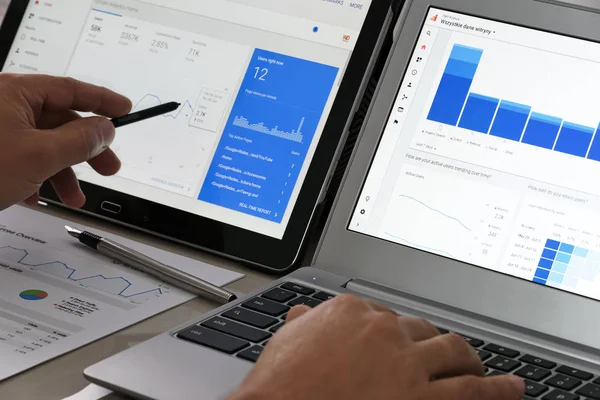Google Analytics is a great tool to use to monitor your website. It can help you understand how visitors use your site, what they’re looking for, and how to attract the right kind of traffic to your website. This information can also be useful for optimizing email marketing, paid advertising, and social media campaigns, which can all improve your site’s effectiveness and increase sales.
User-ID is an important part of tracking
User-ID is an important part of tracking your website traffic. It allows you to recognize visitors as an individual and help you analyze how your website is used. This feature can also help you integrate offline and online data to create one single customer view. You can use this feature to determine which visitors are valuable to your business and what they do on your website.
In order to use the User-ID, a website must allow users to log in. This must be done before the tracking process begins. However, not all users will log in each time they visit. Therefore, it may take a while to assign a User-ID to everyone.
User-ID is important to Google Analytics because it captures insights from logged-in users. Without the User-ID, Google Analytics will be unable to tie together data about your website visitors. Having a unique User-ID will allow you to create a comprehensive view of your website visitors’ behavior and the actions they took on your site.
Once you’ve set up the User-ID, you’ll need to create a User-ID view for your website or mobile app. It’s important to create a User-ID view for each of your websites or apps. Once you’ve created your User-ID view, you’ll need to name it, as it will represent a unique user. Remember, the User-ID can interact with multiple browsers and devices.
Getting a User-ID for Google Analytics is easy, but it can be tricky depending on your project. This guide will show you how to use Google Tag Manager to create a User-ID field. It’s important to remember that Google Analytics cannot collect data without the consent of the user. You must also keep GDPR in mind when using Google Analytics.
User-ID can help you track your audience’s behavior across different devices and sessions. Without the User-ID, Google Analytics will report three different users for the same user. By using the User-ID, you can ensure that your user counts are accurate and reliable across devices. This feature can also help you understand how your audience is using your website.
User-IDs are essential for tracking users’ actions and interactions. In general, Client IDs are generated randomly, while User-IDs are generated manually. The Client ID includes the time stamp of the first visit, while User-IDs do not. A User-ID is a unique identifier composed of alphabetical characters.
Tracking user-IDs is important for unique visitor counts. By tracking User-IDs, you can segment different user segments. The tool also uses several heuristics to determine if a visitor is the same across devices and locations. This data can also help you provide customer support, and you can perform security audits on your website.
Adding User-ID tracking to your GA account will enable you to compare logged-in and logged-out users. This gives you a different perspective on your GA data and provides you with additional reports such as Cross Device and User Coverage.
It’s easy to enable
You can enable cross-device tracking in Google Analytics to see how many users visit your site on different devices. This feature is generally enabled for sites that require a login. Enabling this feature requires more than two clicks. Let’s take a look at the various options available to you.
It’s a powerful tool
Analytics is a tool that helps businesses to make better decisions and optimize their business processes. By collecting and analyzing data from various sources, these tools provide businesses with valuable information on key performance metrics. They also enable business owners to understand their customers’ interests and behavior and identify opportunities to improve their business.
One of the most important benefits of analytics is that it helps companies adapt to changing conditions. These tools can make the difference between thriving and failing in today’s highly competitive business world. However, companies must be aware that analytics is a process and must be continually improved. The goal is to keep your company moving forward by continuously learning and refining its methods.
Analytics can help your business stay one step ahead of the competition. It offers various tools and reports that allow you to keep track of your competitors’ marketing campaigns. This key information can help you tailor your own marketing efforts. For instance, if your competitors have a social media presence, you can follow them on Facebook to learn how they attract customers.
Analytics also allows you to forecast future trends. These predictions can help you grow your business, hit your targets more effectively, and save resources. However, it is vital to set clear goals before you start using analytics. Otherwise, you might end up making unhelpful guesses or false predictions. Make sure that the data you gather is relevant to your business goals. This way, you can ensure you stay ahead of your competition.



